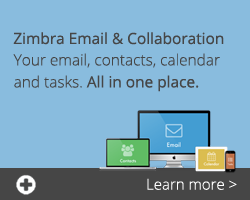
Wondering how to generate more traffic from search engines? Want to know how to get your blog to the top of search pages?
Search Engine Optimization (SEO) is the way to do this. It boils down to this: The higher SEO your blog has, the better chance it has of popping up on search engines and generating traffic. By using SEO tools, you are giving your blog an opportunity to be viewed and shared by more people – a key marker of success in the digital age.
Below are a few things you can do to improve your blog’s SEO and make it search friendly:
1. Use Keywords
This seems fairly straightforward, but there is an art to using keywords! Too little can make your content harder to find on search engines, while too much can make your content messy and difficult to read.
To maximise the benefits, while minimizing the risks, here are some things you should consider:
- RESEARCH:
Sometimes, it’s hard to know what keywords you should use, and how many to use. Take the time to research which keywords are most relevant to your content, and effective at bringing in traffic through search engines. Try identifying 2-4 primary and secondary keywords that seem to best fit your content. - PLACEMENT:
Make sure that you are placing your keywords throughout your content, in the spaces that are more likely to make an impact. This includes in the titles, headers and subheadings, introductions, conclusions, anchor texts, image texts, tags and meta-descriptions. But remember: a little goes a long way. Putting keywords in these spaces just for the sake of it can weigh down your content and make it difficult to consume.
2. Think Before You Write
Every blogger knows that the content of what you write about is important. You want to make sure that your writing is interesting to readers and relevant to the purpose of your blog. And while it is important to focus what you write, you should also think about how you write.
Here are some things to keep in mind:
- PRESENTATION:
Make sure that you are displaying your content in a clear, organised manner. Use paragraphs to separate your points into a beginning, middle, and end. Try to write posts of substantial length, ideally between 500-2500 words. And of course, check for spelling and grammatical errors. All of these factors demonstrate to readers and search engines, that your blog has quality content worth reading. - ORIGINALITY:
One of the best things you can do as a blogger is creating original content. Search engines flag duplicated content, even if it’s from another page/post on your own website. You can improve your SEO by ensuring that your content is original and not taken from any other web pages or sites. - PURPOSE:
It can be tempting to write content in a way that best satisfies search engines. However, it is important to remember that your readers are people, not computers. Be sure to write your content in a way that is easy for your readers to consume and satisfies their needs. SEO is important, but your focus should remain on your readers. - LINKS:
Using internal links to other web pages on your blog, as well as external links to other websites, can help connect your readers with relevant information and resources. This is also a great way to boost SEO, as these links help search engines better understand your pages and content.
3. Optimise Your Post
Once your post is written, now is the time to tell the web what you wrote! There are two main ways to do this:
- KEYWORDS:
Remember those keywords from Step 1? If you haven’t already, this is the time for you to add your primary keyword into the most effective positions for increasing SEO. Specifically, the keyword should be added to: Page title, permalink, SEO title, meta-description, and image alt-texts. This will help search engines understand your blog and present your posts in search results that are relevant to your content. - CATEGORIES AND TAGS
This classification system is an effective way to organise blog posts and content! When you assign categories and tags to your posts and pages, you make it easier for readers and search engines to connect the topics/themes of your content. The better search engines understand what you are posting about, the more accurate they can rank your blog in search results.
4. Verify Your SEO
There are many plugins you can install on your blog to help you maximise your SEO. One popular example is Yoast.
By installing this type of SEO plugin, you can ensure that you’ve completed all the right steps in making your blog search friendly. The plugin will confirm what you’ve done right, and tell you what you could do to improve the SEO of your posts – ultimately helping you better your blog’s position in relevant search results.
Take home message
Above are a few steps you can take to improve the SEO of your blog. SEO is one of the best and most effective tools you can use to generate more traffic on your blog and improve your blog’s ranking within search results. By improving SEO, you are increasing the chance for your content to be seen and shared, which makes it a vital contributor to your blog’s impact and success.
Thanks for reading!
Need more help? Click here for simple SEO tips for your small business.
Posted on January 16th, 2018 and last modified on October 23rd, 2024.

